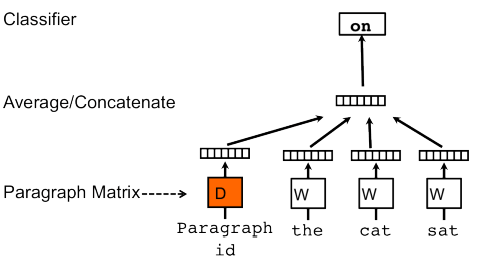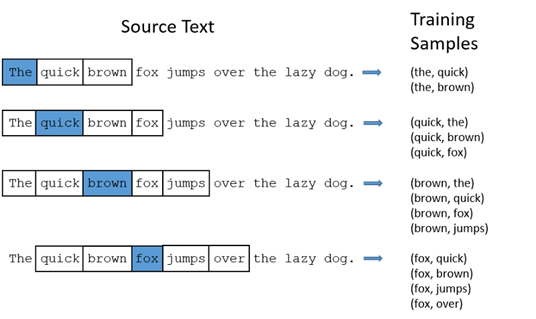Healthcare is one of those industries that embrace cutting-edge technologies and makes the most of them. The reason for this is simple – new technologies that help save people’s lives and increase the quality of life.
The adoption of machine learning and natural language processing algorithms throughout the healthcare industry has helped to streamline and vastly improve workflows of different medical procedures, and as a result, has made them more effective for their causes.
Some of the most prominent examples of such streamlining and improvements are patient support systems. Let’s explain why.
What’s wrong with patient support?
The word that best describes the state of patient support in the healthcare industry is “overwhelming”. Unlike other fields of the healthcare industry, where the root of the problem lies in the methodology, in the case of patient support it is the scope of the operation. In other words, too much demand and too little supply.
Just like regular customer support everywhere else, the primary issues are:
- Workflow efficiency. Because of limited resources, there is a tendency towards bottlenecks in the support pipeline. This prolongs the processing of the request and subsequently stretches out the reply time for a single request. As a result, the request processing pipeline is severely undercut.
- Workforce turnaround. Due to the high workload and punishing schedules, support operators often burn out and quit.
- Availability of the service. It is hard to maintain a fully-fledged 24/7 support service, beyond simple Q&A automation, with a limited workforce.
- Bringing onboard new employees takes time.
- Operational costs. In addition to employee salaries, there are infrastructural maintenance costs.
In one way or another, these issues are solved with process automation and adoption of Chatbot and Natural Language Processing.
NLP Chatbot creates a win-win situation, both for healthcare service providers, and patients.
- Companies are able to optimize the workflow;
- Chatbot reduces the workload of the human operators while making the service available 24/7.
- Patients get a much more engaging and efficient service.
Here’s how:
- Conversational UI chatbots take over the majority of routine conversations, such as results notification and Q&A. Human operators are involved only in special cases;
- Natural Language Processing provides a deeper dive into the intent and sentiment of the user’s requests;
- This information gives ground for process automation that increases the speed of delivery up to 40%;
- The implementation of the conversational interface chatbot lowers the operational costs up to 30%.
Our company was approached to develop such a solution and implement it into the existing system infrastructure. Let’s look at how The App Solutions developed a Chatbot solution for Healthcare patient support.
How Chatbot can create a more efficient patient support system?
The client had a patient support system that handled a wide scope of patient requests such as:
- Providing various notifications – like test results, examination registering, etc;
- Solving emerging issues – for example, retrieving lost passwords or explaining how to use different features of the service;
- Gathering user feedback on the support service itself, and other services of the company.
The entire operation was handled by trained human operators who worked under a strictly regulated set of guidelines.
And while the workflow was fine-tuned, it wasn’t sufficient enough for the scope of the operation. With over a million active users, the patient support system resources were stretched too thin.
In addition to this, there were concerns regarding the use of sensitive information and the possibility of compromising the integrity of the users’ accounts.
Because of this, it was decided to completely overhaul the patient support system with cutting edge technologies.
Our task on the project can be described as follows: to develop a reliable solution that would:
- Streamline the workflow of the customer support operation;
- Keep sensitive information safe.
The key requirements were to:
- Implement a chatbot and enable 24/7 support;
- Implement process automation for basic conversations and actions;
- Increase the request resolution time;
- Deploy the system on the cloud platform and make it more scalable for large scale data processing;
- Keep the system fully compliant with the current privacy regulations.
Here’s how it went down:
Training a language model
Process automation and Chatbot interface require a pitch-perfect understanding of the request intent and subsequent trigger of the course of action. The former part is handled by the NLP language model.
We have used a combination of Word2Vec and Doc2Vec to train the model and optimize the generative algorithm.

[Example of Doc2Vec mechanism]

[Example of Word2Vec mechanism]
Due to the specifics of the healthcare topic, the use of the open-source datasets is somewhat limited. They can be used to provide a groundwork for the model, but further training and optimization requires more peculiar data taken directly from the system.
In order to train a language model on the best fitting dataset – we compiled it ourselves from patient support conversations. We used unsupervised machine learning algorithms to explore patient support data and then applied supervised machine learning algorithms to shape it into a training dataset.
Optimizing chatbot
The chatbot was the main system component. With a language model intact – our goal was to construct the interface around it.
The model was developed with Python NLTK and Chatterbot library. After that, it was migrated to the web interface with Flask API.
We implemented a couple of machine learning algorithms to determine the intent of the request and connected it with relevant actions. For example, if the patient asks about doctor working hours – the bot accesses the doctor’s calendar and provides the relevant information.
The main challenge at this stage was making the interface accessible. Since the level of technical literacy of the users may vary – we needed to make the whole thing as simple to use as possible.
In order to do this, we applied extensive A/B testing of the functional elements. This allowed us to streamline the interface design and also optimize the conversation design.
Implementing process automation with machine learning
After developing a working language model and constructing a conversational UI chatbot around it, our next step was to prepare the process automation routines that would be activated from the chatbot interface.
In order to do that, we broke the task into three categories:
- Service support automation – the ones related to the services themselves (such as booking an examination or requesting test results).
- Maintenance automation – related to system support and general information (for example, how to retrieve a lost password or to proceed with checkout)
- Switch to human operator scenario – for complicated or emergency cases
We identified keywords and intentions for action triggers with TF-IDF.
In order to broaden the scope of the model, we combined them with a wide selection of phrase variations so that the routine would be activated through casually formulated input queries.
Cloud Deployment
In order to secure consistent system performance, we deployed the entire project into the cloud platform.
In this way, the patient support chatbot can maintain a high turnaround of information in the system, and a large volume of different operations, without slowing down or experiencing technical issues.
Google Cloud Platform autoscaling features provided a solid backbone for every operation in the system and neutralized possible emergence of the scalability issues.
Implementing Data Security solution
Privacy and confidentiality are amongst the central concepts of healthcare services. In the case of patient support systems, this is one of the most important elements. Not only do you need to guarantee the security of data in general, but you also need to guarantee that the whole interaction between the service and the patient is absolutely confidential.
The whole data processing operation must be compliant with the Personal Information Protection and Electronic Documents Act (PIPEDA).
In order to maintain PIPEDA compliance, we implemented the following solutions:
- Provided a detailed description of how user personal data is used on the service;
- Expanded a consent agreement for data processing upon registration;
- Limited retention of data from deleted accounts to 30 days after termination.
- Implemented Transport Layer Security (TLS) with a 256-bit Advanced Encryption Standard for data transit.
Tech Stack
- Google Cloud Platform
- NLTK for Python
- Chatterbot library
- Flask API
- Word2Vec / Doc2Vec
Conclusion
The project reinvigorated the company’s patient support.
- The implementation of the chatbot interface cut operational costs in half.
- The NLP component increased the efficiency and availability of the service. As a result, the response time period was decreased by a third.
- The process automation allowed to streamline the service’s workflow and minimize the role of human operators in the handling of sensitive data.
On the other hand, this project was a huge accomplishment for our team. We developed a complex solution that managed to bring the whole patient support system to a new level with a much higher efficiency rate.
During the development of this project, we utilized more streamlined workflows that allowed us to make the whole turnaround much faster. Because of this, we managed to deploy an operating prototype of the system ahead of the planned date and dedicated more time to its testing and refinement.
Have a project in mind?
Write to us